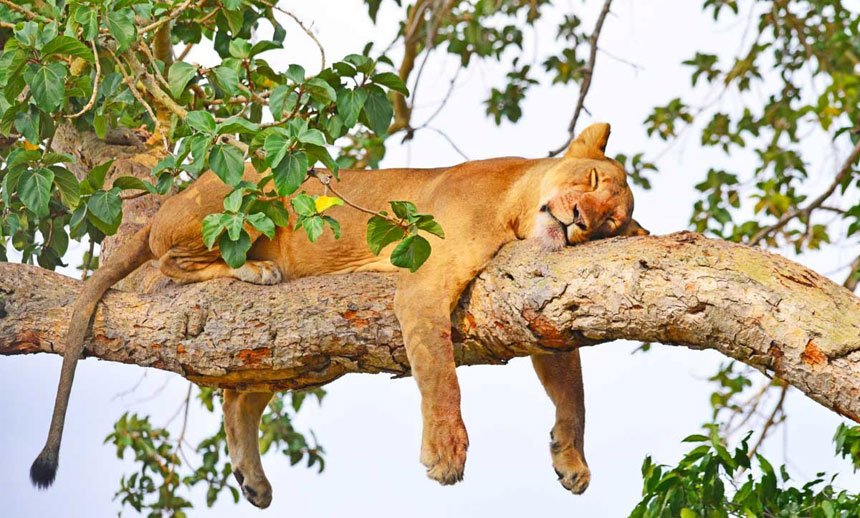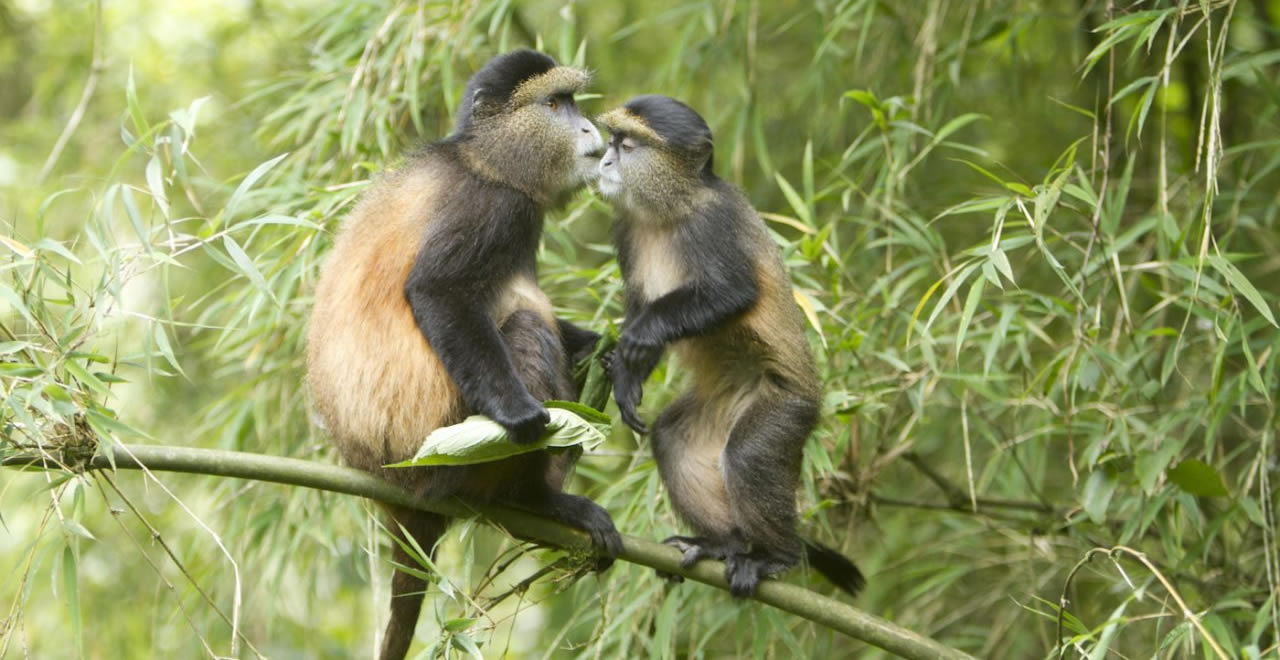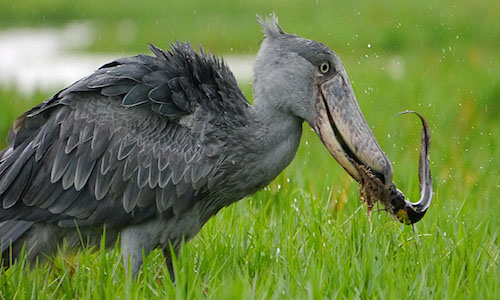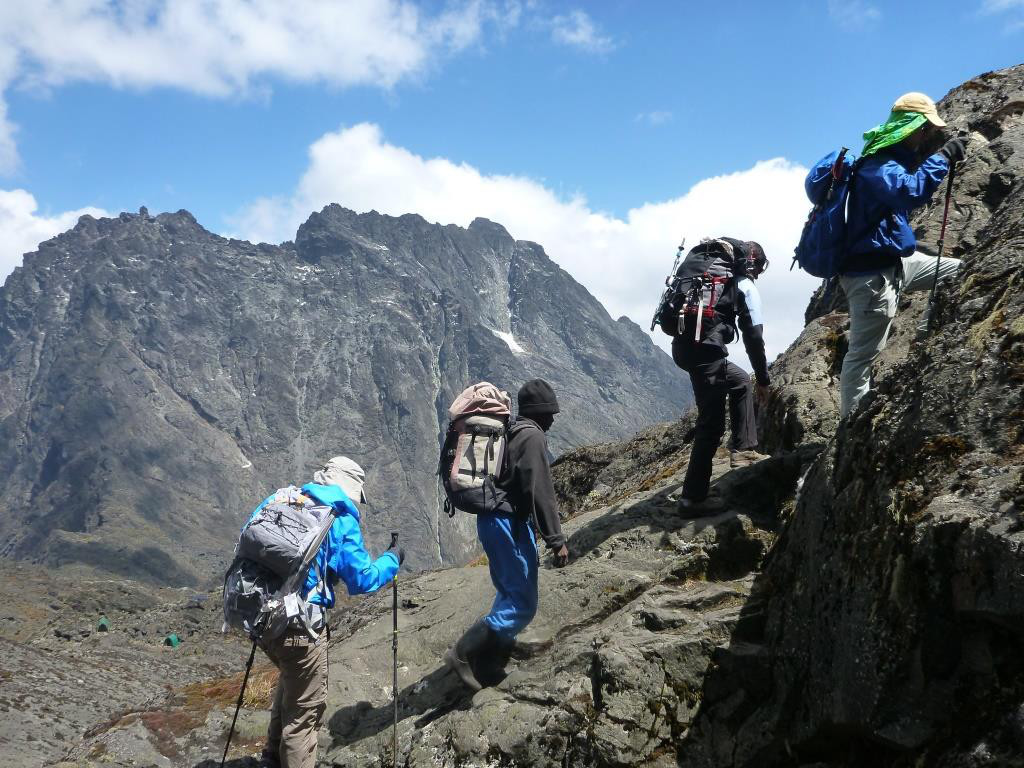The Ngorongoro Crater is part the larger Ngorongoro Conservation Area (809,440 ha) which spans the vast highland plains, savanna woodlands and forests, from the plains of the Serengeti National Park in the north-west, to the eastern arm of the Great Rift Valley. The area was established in 1959 as a multiple land use area, with wildlife coexisting with semi-nomadic Masai pastoralists practicing traditional livestock grazing. It includes the spectacular Ngorongoro Crater, the world’s largest caldera, and Olduvai Gorge, a 14km long deep ravine. The property has global importance for biodiversity conservation in view of the presence of globally threatened species such as the black Rhino, the density of wildlife inhabiting the Ngorongoro Crater and surrounding areas throughout the year, and the annual migration of wildebeest, zebra, Thompson’s and Grant’s gazelles and other ungulates into the northern plains.
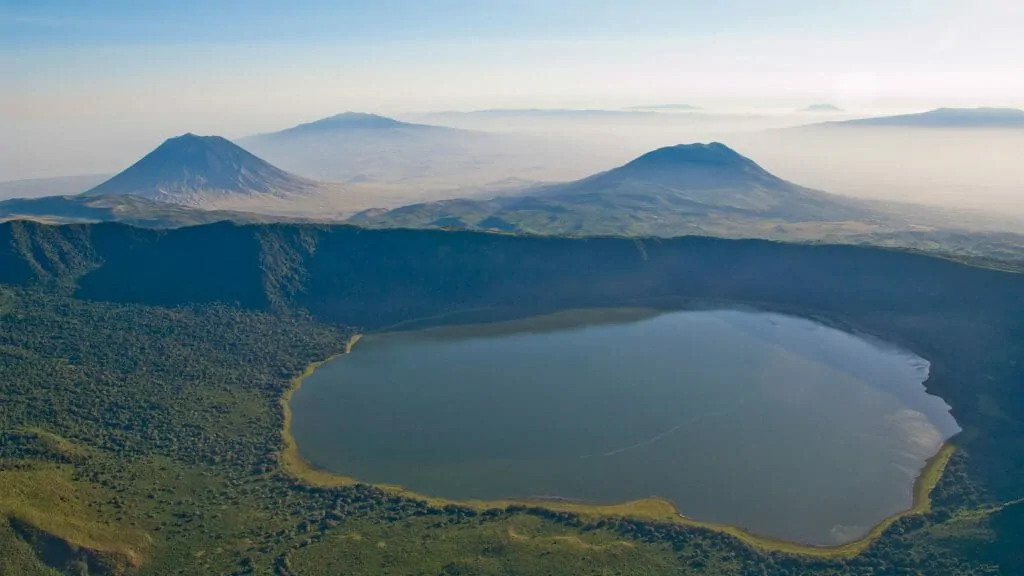
Location of Ngorongoro Crater
Ngorongoro crater is located in the Northern part of Tanzania on Grate Eastern rift valley arm. This area is under the management of Ngorongoro conservation area authority and it’s located in the villages of Olorobi district which has continued to develop due to the possession of the National park. Park fees collected are always taken back to develop its surrounding communities which includes the villages of Olorobi which have seen infrastructural development in form of schools, hospitals and roads with water and electricity.
Best time to visit the Ngorongoro Crater
Ngorongoro conservation area has a wide array of species such as both flora and fauna which leaves it open to travellers throughout the year. However there are some seasons which are very interesting for tourists to visit. The most exciting season is the dry season during the month of June- September and December to February which are usually dry months unlike the wet season which makes the animals hide in search for shelter and also the roads are somehow slippery which makes it a little bit difficult to access.
12 facts about Ngorongoro Conservation Area
Ngorongoro conservation area is one of the 8th wonders of the world, it offers a wide spectacular view for all wildlife species, with over 25,000 animals and mostly here travelers can have a chance to spot the Big 5 species and here are the facts as to why you should choose to visit the famous Ngorongoro crater conservation area which marks as one of the magnificent area to visit in the world today.
1. The stunning landscape of Ngorongoro Crater
combined with its spectacular concentration of wildlife is one of the greatest natural wonders of the planet. Spectacular wildebeest numbers (well over 1 million animals) pass through the property as part of the annual migration of wildebeest across the Serengeti ecosystem and calve in the short grass plains which straddle the Ngorongoro Conservation Area/Serengeti National Park boundary. This constitutes a truly superb natural phenomenon.
2. Ngorongoro crater is the largest unbroken caldera in the world
The crater, together with the Olmoti and Empakai craters are part of the eastern Rift Valley, whose volcanism dates back to the late Mesozoic / early Tertiary periods and is famous for its geology. The property also includes Laetoli and Olduvai Gorge, which contain an important paleontological record related to human evolution.
3. Ngorongoro Conservation Area is home to a population of some 25,000 large animals
mostly ungulates; alongside the highest density of mammalian predators in Africa including the densest known population of lion (estimated 68 in 1987). The property harbors a range of endangered species, such as the Black Rhino, Wild hunting dog and Golden Cat and 500 species of birds. It also supports one of the largest animal migrations on earth, including over 1 million wildebeest, 72,000 zebras and c.350, 000 Thompson and Grant gazelles.
4. The crater has several ecosystems
the Ngorongoro crater has a wide range of habitats which are able to support the vast array of wildlife. Here are some of the most prominent eco systems include the steep and forested crater wall, the alkaline and seasonal salt lake Magadi, Mandusi and Gorigor swamps, Hippo pool and lerai forest all which provides the magnificent views of the area.
5. The crater has the highest number of lion density in the world
Ngorongoro crater conservation area, hands down the highest number of lions pride in the world, according to Kope Lion statistics there were 65-75 lions in Ngorongoro crater in August 2020 and divided in eight prides as compared to the nearby Serengeti National park.
6. Lions of the Ngorongoro Crater are the world’s best studied population
Here during the past editions, the conservation area has had the study which has shown that that the majority of lions in Ngorongoro crater were born there remained there throughout their lives and die from there. Occasionally a roaming male lion will enter the crater and some stay permanently while others move on and this has therefore led to an increase in incestuous lion population with male lions mating with aunts, sisters, and even mothers, daughters and grandmothers.
7. Over 550 bird species can be spotted here
Ngorongoro crater conservation area harbors a large number of birds which are both migratory and settlement birds, which are always at a glance to most of the visitors while in the area. These birds are at time rare species which are only found in this area. Eagles, buzzards, hawks, kites and vultures. Other types of birds in the crater include greater and lesser flamingoes, swans, storks, pelicans, geese, plovers, teal, gallinules, pheasants, plovers, lapwings, spurfowls, sparrows, larks, wheatears, pipits, cranes, bustards, coots and rails and for migratory bird, these can be seen between the months of September and April.
8. The presence of historic tribes that have an attachment to the area
Ngorongoro conservation area, is termed as one of the few areas in Tanzania that allows community practice in the protected area, communities leaving in the area are only allowed to live in the area but without practicing agriculture, they are allowed to live there and do livestock , however no body is allowed to stay in the crater and the three are the groups of people living in the conservation area with the Masai contributing to 98%, of the resident population, Datooga 2% of the resident population and Hadza families living near lake Eyasi.
9. A UNESCO World Heritage Site
Ngorongoro crater conservation area being a world natural and cultural heritage sites due to the presence of very many threatened species like the Black Rhino, wild hunting dogs, and the golden cats, its high population for animal density in the world, all this provided the reason for the area to be visited.
10. The crater has the Big five species but no giraffes
here few protected national parks in Africa can boast of having both the Big five and the Giraffes One of the key reasons for this is the critically endangered nature of black rhinos. In the past two centuries black rhinos have been hunted to near extinction, and the remaining populations require constant protection from poachers and here its speculated that giraffes are not the crater area due to the fact that the walls are too steep for them to descend.
11. The Oscar-winning movie Out of Africa
This was filmed partly in the Ngorongoro Conservation Area. One of the scenes you can spot the crater is when Denys takes off from the Olkurruk airstrip and flies over the Masai Mara and Ngorongoro.
12. When it was a volcano it’s thought to have been a similar size to Mount Kilimanjaro
One of the world’s highest mountains. Estimates of the volcano’s original height vary between 4,500 to 5,800 metres. The crater itself is about 610 metres deep and 260 kilometers squared.
What to do and see in Ngorongoro Conservation area
Due to the existence of high wildlife concentration in the area, with lots of other exciting attractions in the Ngorongoro conservation area and here is a number of activities which can be done by the traveler while on a visit at this destination. The Ngorongoro crater conservation area in one of the fewer areas in the Tanzania that provides human habitation with wildlife. Here the Masai herds’ men are allowed to graze with in the crater area. This creates an impressive Masai experience while on a safari.
Game drive and wildlife viewing
Ngorongoro conservation crater area has the high concentration of wildlife species more especially this provides you the great opportunity to see a variety of wildlife in the conservation area. Game drives are conducted twice in a regular tour van in shifts with the morning and afternoon, because here animals do not migrate thus making wildlife viewing wonderful throughout the year. The dry season from December – March and June to September which gives the best wildlife viewing opportunity in Ngorongoro crater conservation area. This area will provide you with the best big five viewing opportunity.
Visiting the Masaai
The Masai are one of Africa’s most interesting tribes. Although they live outside the crater itself, they are allowed to graze their animals around the crater rim or bring them down the crater for water during the dry months of the year. While visiting the Ngorongoro Conservation area, the visitor will have a fascinating experience on having the encounter of viewing the Masai heard men grazing there cattle in the crater area with a mixture of other wildlife species and this may in turn providing a rewarding cultural experience on the social cultural lives of the Masai people and see on how they live and interact with the wilderness. A special arrangement can be done for the tourists to visit one of their villages / families that are less visited and learn their way of living. Visiting the Masai people involves attending traditional dance performances, taking photos, buying souvenirs and meeting the elders.
Nature and Crater View Walks
Having a nature walk on the crater ridges will provide you a magnificent experience as you will be able to see an encounter between the Masai men and the wildlife species. Here you will evidence on how the Masai men control their cattle from getting attacked by the wild animals more especially lions and leopards as you have an open view through the grasslands and you can also spot some of other wildlife species like birds and get a chance of taking photos which will give you the unforgettable memories.
Bird watching
The Ngorongoro crater is one of the best places for birding in Tanzania. With a recorded number of over 500 bird’s species, here both the Ngorongoro highland and crater offers the best opportunity for birders. The highland forest and crater area has an inquisitive bird species which are of interest, to the visitors and these include the African cytrill sights, forest buzzard, golden winged sunbirds and white eyes slaty. This therefore makes the Ngorongoro area a comfortable place for bird lovers.
Hiking to the summit of the Gol Mountains
The Gol Mountains are found within Serengeti National Park, which is traverse near to the Ngorongoro crater with excellent slopes which have a grate base for wildlife viewing and cultural encounters with the Masai Herdsmen. At the base of the Gol Mountains here is the famous Nasera Rock where tourists can spot a variety of birds and hundreds of baboons. The Leakey family excavated remains of humans who lived there during the Stone Age period. The Gol Mountains will capture your imagination if your dream is to explore the remote African wilderness. After exploring the Gol Mountains, you can also choose to conquer an active volcano known as Oldoinyo Lengai, thus giving you an exciting cultural and adventure experience.
Visit to the Empakai Crater
A trek in these areas is guaranteed to give you an amazing experience. Safari for the adventurous trekkers. The Empakai Crater is a collapsed volcanic caldera which is 300 meters high and has a width of 6 km. The Crater is filled with a deep alkaline lake which occupies about 75% of the Crater’s floor and is about 85 meters deep. You can see Oldonio Lengai, Mount Kilimanjaro and the Great Rift Valley from the Crater’s rim. Walking down the crater you can also have magnificent view of the Mount Lengai. The Crater’s rim offers two special campsites. The Empakai Crater and the Olmoti Crater have similar vegetation and bird-life the Crater is marvelous for wildlife. Among the animals living in this area are: the Bearded Vulture, the Augur Buzzard, blue Monkeys, Bushbuck, water bucks and buffaloes.
Lake Magadi Visit
Lake Magadi being one of the fascinating features in the world that attracts quite number of travellers because of its wildlife and physical appearance. This lake also flourishes on being a source of food to a variety of species such as birds more especially the flamingos which travel in and out of the Crater Lake at night. Many other animals like Lions, Rhinos and elands are found around the shores and at the same time providing a good site for spotting the golden jackals which regularly hunt the flamingos.
Visit Olduvai Gorge
Olduvai Gorge is a site in Tanzania that holds the earliest evidence of the existence of human ancestors. Paleoanthropologists have found hundreds of fossilized bones and stone tools in the area dating back millions of years, leading them to conclude that humans evolved in Africa. It is in this area where Dr. Leaky discovered the remains of the very first hominids in Olduvai Gorge during the 20th Century. They went on to make some ground breaking discoveries with most of them older than 2 million years ago. The fossils include that of extinct animals that roamed the area and the more recent Stone Age man. You can register to be taken for a guided walk within the gorge. Do not forget to check out the hominid footprints in Laetoli. These footprints where discovered on a volcanic rock and are over 3 million years old. There is a small museum that was built for public viewing and contains excavated remains and artifacts for tourists to see.


